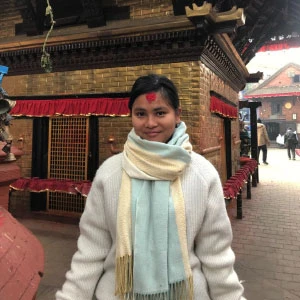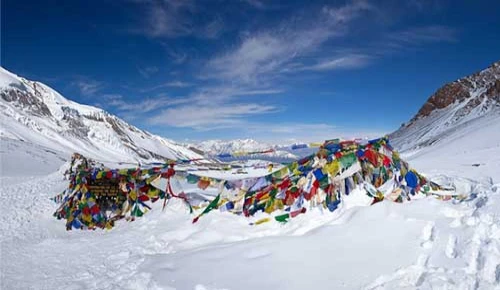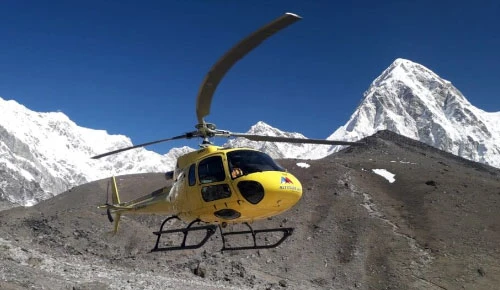Gorakshep Village: The Last Himalayan CampSite Before EBC
It's likely that you will hear the same name repeatedly on the journey to Gorakshep if you have ever dreamed of trekking to Everest Base Camp. Gorakshep is a small, air-swept village in the high Himalayas of Nepal, and although it is not a top destination, any trekker dreaming of standing at the foot of mighty Everest must pass through it.
Gorakshep at a quick glance could only appear like a cluster of stone shelters atop a dry, sun-parched sandy desert that had snaked around glaciers and snow-capped mountains. However, to trekkers it means a lot more. It is the last destination where people can rest before the last trek to the Everest base camp and the beginning path of Kala Patthar, which provides one of the most excellent views of Everest. Gorakshep is the core of the EBC trek in every way: difficult, chilly, and brutal, yet unforgettable.
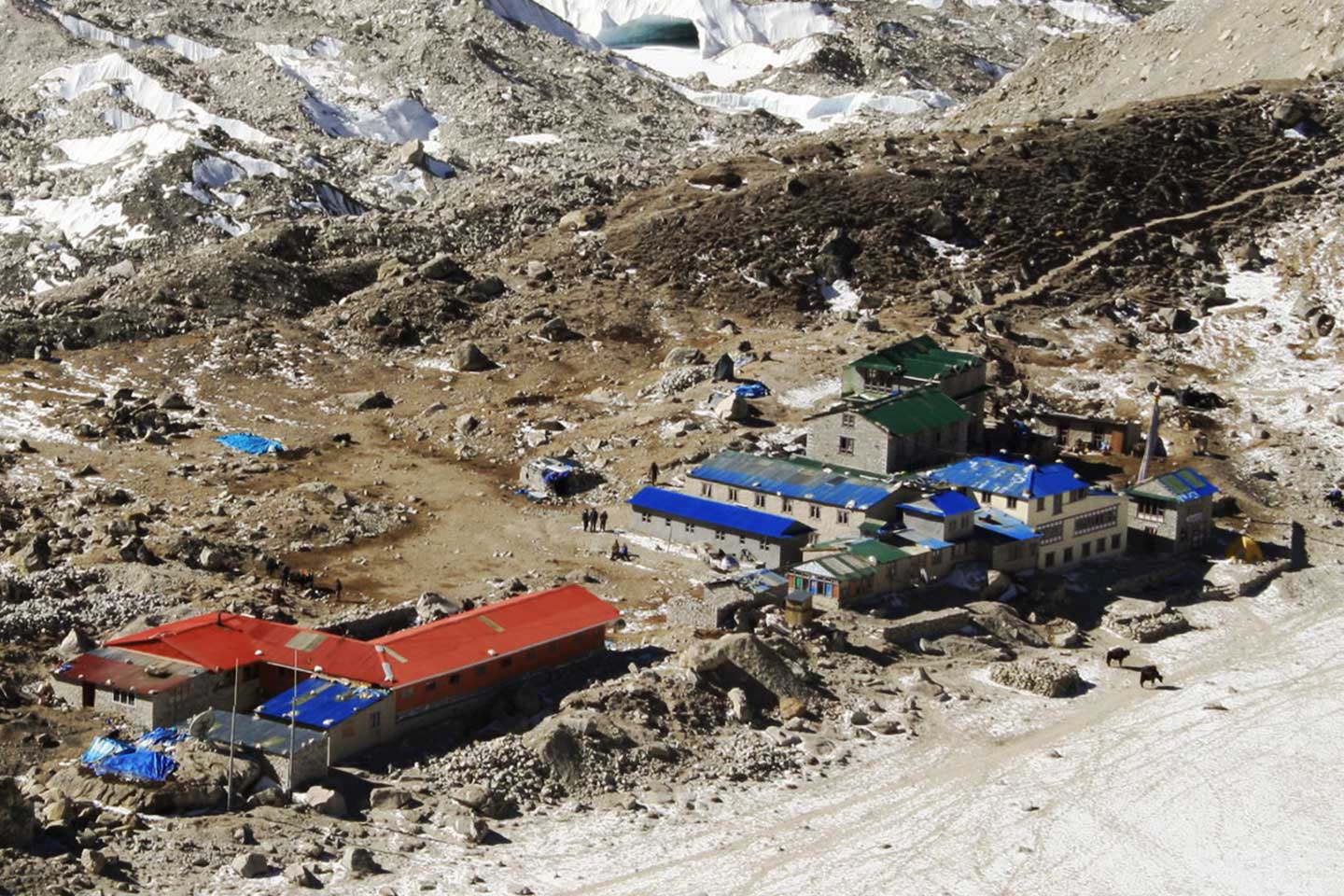
What is Gorakshep?
"Gorakshep" literally means "dead ravens," and such a glamorous name would be very dramatic. It is also at an elevation of 5,164 meters (16,942 feet), already qualifying it as higher than most hills worldwide. Long before the establishment of the current Everest Base Camp, the site was used as the original Everest Base Camp for expeditions that traveled higher toward the Khumbu Icefall to gain safer access to the mountain.
Gorakshep is today simply a clump of tea shops, teahouses, and night lodges. The town is not an ordinary village, with a permanent local community inhabiting the area throughout the year. This is for those who hike or climb mountains and guide others to Everest's peak.
Table of Contents
Trekking Journey to Gorakshep Village
The journey to Gorakshep is significant on its own. Most trekkers begin their journey with an exhilarating flight to Lukla, followed by days of cautious progress through iconic destinations like Namche Bazaar, Tengboche, Dingboche, and Lobuche.
The last part of Gorkshep, located at a nearby altitude of Everest, typically takes between 7 and 8 hours, depending on pace and acclimatization. The trail is not super steep but is rough and exposed. The scenery has changed hugely; green forests and colorful villages were in the pastures, now replaced by rocky highways, frozen paths, and grey moraines of the Khumbu Glacier.
Being at this altitude is different from walking. Any movement causes shortness of breath. The best trekkers can maintain a very slow pace because their lungs cannot take in as much oxygen, and their receptors struggle to adjust. It is only natural to pause periodically, take a sip of water, and gaze up 360 degrees at the mountains and the snow-capped, glaciated mountains in the distance.
Life at 5,164 Meters: Stories from Gorakshep Village
When you eventually arrive in Gorakshep, you quickly realize that it is not a place designed for comfort. Here life is primitive as can be
Only several teahouses and lodges exist, which are rather alike: they have wooden rooms with thin walls and common dining halls with a yak-dung stove in the middle to warm them a bit during the evenings. You won't receive hot showers or comfy beds here; the village is a place for survival, not luxury.
Solar panels provide most of the electricity, and Wi-Fi is available in some lodges, but it's limited and expensive. It is generally charged by cell phone or camera, and this comes at an additional fee because the power is rationed. Food is easy: all rice, noodles, lentils, eggs, and the popular Nepali dish dal bhat. All the food or drink you order here has been walked or yakked up the slopes, which is why the higher you go, the higher the food/drink prices are.
The lodge at Gorakshep is even colder than the frigid days and nights. Sleeping bags and additional clothing are not optional; these are essential.
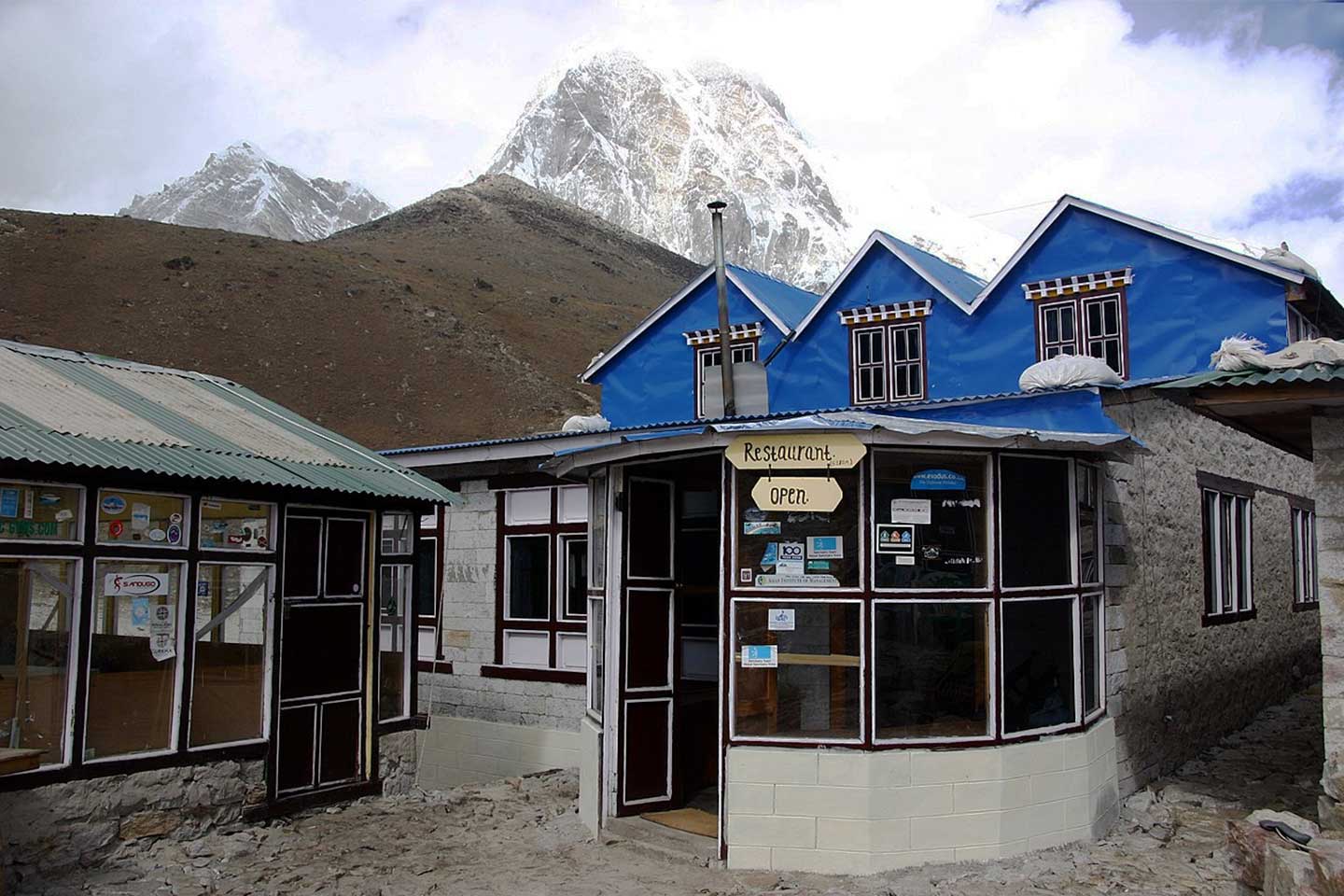
What Makes Gorakshep the Beating Heart of the EBC Trek?
Gorakshep may look like a small, barren village at first glance, but for Everest Base Camp trekkers, it holds huge significance. Despite its harsh environment and limited facilities, it plays a key role in making the EBC journey possible and memorable. Here’s why Gorakshep is vital:
- Gorakshep may look small and barren, but it holds huge significance for Everest Base Camp trekkers.
- Almost every trekker heading to Everest Base Camp passes through Gorakshep, making it the last settlement before the iconic base camp.
- Kala Patthar, a small peak at 5,545 meters, starts from Gorakshep and offers the best panoramic views of Mount Everest, especially at sunrise.
- Reaching Gorakshep is a psychological milestone, signaling that the dream destination is just a few hours away.
- Gorakshep provides basic accommodation and food, giving trekkers a vital resting point before continuing to Everest Base Camp or Kala Patthar.
- The village has historic importance, as it used to be the original Everest Base Camp decades ago.
- Despite its simplicity, the surrounding views of peaks like Pumori, Nuptse, and the Khumbu Glacier make Gorakshep a photographer’s delight.
Things to Do in Gorakshep Village
While Gorakshep itself is not a particularly bustling place, it serves as the starting point for two incredible excursions:
Trek to Everest Base Camp (5,364 m)
Leaving Gorakshep will be a 2- to 3-hour journey on the Khumbu Glacier, and then you will arrive at the mythical Everest Base Camp. The upward climb is treacherous and lovely, you pass rocks, ice sculptures, and flags and finally get up to the camp itself. For some, witnessing the massive ice walls and climbers beginning their ascent of Everest is an emotional experience.
Hike to Kala Patthar (5,545 m)
Kala Patthar offers a picturesque vista of Everest. Trekkers tend to walk in the early morning to see the sunrise when the first rays of the sun fall on the highest point in the world. The trek is tough; it involves a strenuous slog to the top, where you carry a massive backpack full of food and, figuratively speaking, the baggage of subconscious memories. As you navigate above Everest, you witness it turning golden in the light of dawn—an experience you will never forget.
Photograph the Himalayan scene.
Gorakshep is surrounded by some of the world’s most majestic peaks, including Pumori, Nuptse, and the Khumbu Glacier. Every angle offers a postcard-perfect view, whether it’s the morning glow on the mountains or the dramatic shadows at sunset. Trekking photographers will find endless opportunities to capture the raw beauty of the Himalayas.
Rest and Acclimatize
High altitudes can be challenging, and Gorakshep provides the perfect spot to pause and let your body adjust. Spending time in the cozy guesthouses, sipping tea, and breathing in the crisp mountain air helps prevent altitude sickness and prepares you physically and mentally for the final hike to Everest Base Camp or Kala Patthar.
Enjoy Local Food at Tea Houses
The teahouses in Gorakshep may be simple, but they offer hearty meals that are a welcome treat after long hikes. Warm dishes like noodles, soups, and the classic Nepali dal bhat provide energy, comfort, and a taste of local culture amidst the rugged mountains.
Experience the High-Altitude Village Life
Life in Gorakshep is simple but inspiring. You can watch how locals, guides, and porters manage daily tasks in extreme conditions. From cooking in small kitchens to setting up guesthouses, the village gives you a glimpse into the resilience and resourcefulness of people living at the roof of the world.
Watch the Sunsets and Stars.
With almost no light pollution, Gorakshep is perfect for stargazing. The sunsets paint the snow-capped peaks in golden and pink hues, while the night sky bursts with countless stars. Sitting outside in the crisp mountain air, you feel a peaceful connection with the vastness of the Himalayas.
Facilities in Gorakshep Village
Food Facilities
Gorakshep food is basic but hearty and mainly served by little teahouses. Trekkers will find hot and hearty meals that provide their much-needed energy at such an elevated altitude. The usual menu consists of the Nepali staple Dal Bhat (rice, lentils, vegetables, and pickles) and Tibetan bread, noodles, pasta, momos, fried rice; and several types of soups and dishes based on potatoes. There is ample availability of eggs, tea, and coffee, too. Because Gorakshep is remotely located, most meals are vegetarian, fresh meat being infrequent and not always available. Water can be drunk as boiled or bottled water, and both are very expensive since all the supplies are transported by the porters and yaks.
Accommodation Facilities
Gorakshep accommodation is very primitive, with some of the teahouses and lodges made of stone or wood. Twin-sharing rooms are common and have wooden beds, thin mattresses, and blankets. There is minimal heating, so it is highly recommended that trekkers bring a warm sleeping bag that won’t freeze in low temperatures. Community toilets are squat in design, and hot showers are not very common. Most lodges use solar power, which comes with a price tag and only provides a limited amount of lighting and charging options. The Internet connection is patchy at other locations. Everest Link Wi-Fi cards may provide low connectivity, but travelers cannot expect much or any digitally based connections.
Medical Facilities
The elevation in both Gorakshep and Acute Mountain Sickness is above 5000 meters, and health problems are found in both areas, in Gorakshep as well as in the low levels or in Acute Mountain Sickness. Sadly enough, Gorakshep itself has no hospital or long-term medical facility. The closest hospital is the Himalayan Rescue Association clinic in Pheriche (4,371 m), not much more than a few hours away. Helicopter evacuation plans for major emergencies may be contingent on weather conditions and cost. Trekking tourists are highly advised to pack their own medicine, altitude illness prophylaxis pills like Diamox, and a first-aid kit with a sufficient number of supplies. To keep this high-altitude settlement safe, it is important to maintain overall hydration, ascend slowly uphill, and pay attention to the advice of guides, who are typically trained to recognize the first telltale signs of AMS.

Challenges of Staying in Gorakshep
Staying in Gorakshep can be an unforgettable experience, but it also comes with several challenges due to its high altitude and remote location. Trekkers should be aware of these difficulties to better prepare for their journey.
- Harsh Weather Conditions: Temperatures can drop well below freezing, especially at night, making it difficult to stay warm.
- Limited Accommodation: Lodges are basic and often crowded during peak trekking seasons.
- Limited Food Options: Meals are simple, with limited variety, and fresh vegetables are hard to find.
- High Altitude Effects: At 5,164 meters, altitude sickness is common, causing headaches, nausea, and fatigue.
- Lack of Modern Facilities: Hot showers, Wi-Fi, and other comforts are rare or unavailable.
- Shortage of Supplies: Essentials like fuel, snacks, and personal items are limited and more expensive.
- No Easy Access: Gorakshep is remote, and everything must be carried in by porters or pack animals, which can make emergencies challenging.
Tips for Travellers
Those who intend to do the trek to Gorakshep and beyond may find a couple of practical tips handy:
- Allow acclimatization: Spend rest days in Namche Bazaar and Dingboche, which will allow time to adjust. Do not hurry the trek.
- Keep water: A good way of combating altitude is by consuming a good deal of water.
- Bring altitude sickness medication: Doctors recommend that some trekkers carry Diamox.
- Bring cold weather clothing: It might be cold, and an excellent sleeping bag, down jacket, gloves, and thermal layers are a must.
- Power backup: Bring additional batteries or a power bank since at times, it is not viable to charge.
- Snacks and essentials: It becomes harder to find energy bars, chocolates, and personal medication as you go higher, so carry them.
- Positive energy: Enter with the attitude that the way will be arduous, but there is a reason why you are here.
Conclusion
Gorakshep cannot be luxurious. It is perhaps not comfortable. In reality, it is wildlife, a setting that is arguably the most challenging environment in which to spend a night. It is also one of the most unforgettable experiences. It is the final marker of human life before the base camp of Everest. It is where trekkers seek strength, relate their experiences, and gear up for the climax. It is evidence that once in a while, the worst places leave the most lasting memories.
In case you have been thinking ahead and preparing to have an Everest Base Camp trek, then keep in mind that Gorakshep is not simply the place you halt at—it is the adventure itself.
With us at Nepal Trek Adventure, we have been taking innumerable numbers of people to Gorakshep and then on to the Base Camp of Mount Everest. Our skilled team will ensure that you remain safe, get your body acclimatized, and enjoy each moment of this magnificent adventure.




